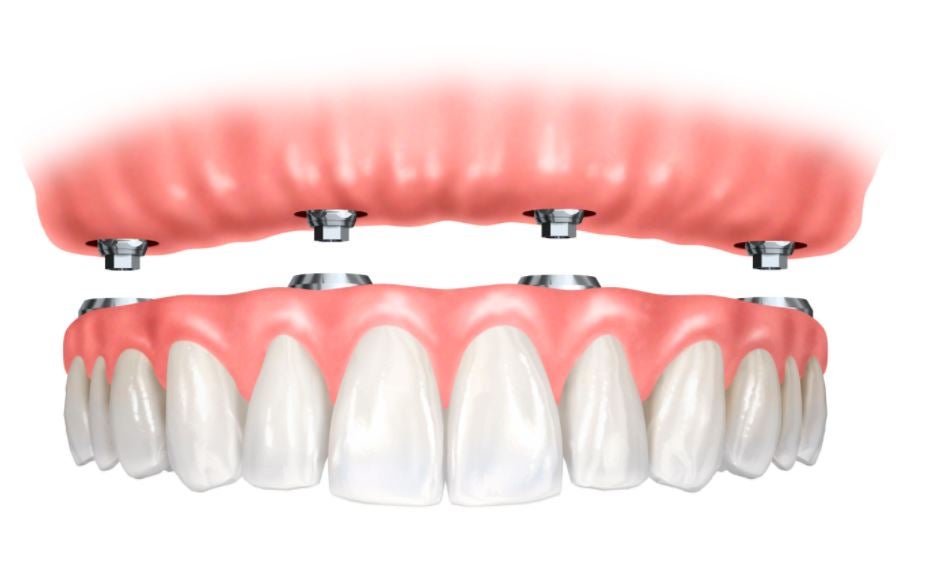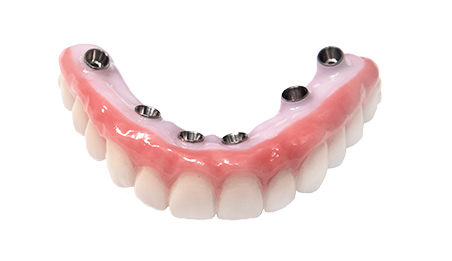The Greatest Guide To Dental Sense
The Greatest Guide To Dental Sense
Blog Article
Dental Sense Fundamentals Explained
Table of ContentsThe smart Trick of Dental Sense That Nobody is Talking AboutDental Sense Can Be Fun For EveryoneA Biased View of Dental SenseThings about Dental Sense
are clinical tools surgically implanted right into the jaw to restore a person's capacity to chew or their appearance. They offer support for man-made (fake) teeth, such as crowns, bridges, or dentures. When a tooth is lost because of injury or illness, a person can experience difficulties such as fast bone loss, malfunctioning speech, or modifications to chewing patterns that lead to discomfort.Dental implant systems consist of a dental implant body and dental implant abutment and may likewise consist of an abutment fixation screw. Cosmetic dentistry services. The oral implant body is operatively inserted in the jawbone instead of the tooth's origin. The dental implant abutment is generally connected to the dental implant body by the abutment fixation screw and expands with periodontals into the mouth to sustain the connected synthetic teeth
(https://www.storeboard.com/dentalsense)Structure of The Dental Implant System selecting dental implants, speak to your oral copyright about the potential advantages and threats, and whether you are a prospect for the procedure. Things to think about: Your total health and wellness is a crucial consider figuring out whether you are an excellent candidate for oral implants, the length of time it will take to recover, and for how long the dental implant may remain in area.
Smoking cigarettes might impact the recovery procedure and decrease the long-lasting success of the dental implant. The healing process for the implant body might take a number of months or longer, during which time you generally have a momentary abutment instead of the tooth. the oral implant treatment: Meticulously follow the oral hygiene guidelines offered to you by your oral copyright.
The Only Guide for Dental Sense
Implant failing can result in the requirement for another procedure to take care of or change the implant system. Recovers the capability to eat Restores aesthetic look Assists maintain the jawbone from shrinking because of bone loss Protects the health of the surrounding bone and periodontals Aids maintain nearby (nearby) teeth stable Enhances lifestyle Damages to bordering all-natural teeth during dental implant placement Injury to the surrounding tissues throughout surgical procedure, such as sinus perforation Injury during surgical procedure (for instance, crack of surrounding jawbone) Insufficient function, such as really feeling like the teeth do not attack together generally An experience that the tooth is loose or turning in location arising from an abutment screw loosening Implant body failing (looseness of the implant body) as a result of systemic infection, which may be most likely in patients with unrestrained diabetics issues because of regional infection in bone and gum tissues supporting the dental implant body due to postponed healing, which might be more probable in patients that smoke Trouble cleaning the periodontals around the implant, resulting in poor oral health Unattended gum disease Post-surgical pins and needles due to nerve impingement or damage Constantly alert health treatment service providers and imaging technicians that you have dental implants prior to any magnetic resonance imaging (MRI) or x-ray treatments.
FDA is not aware of any type of adverse events reported for MRI or x-ray procedures with oral implants. Oral implants systems are generally made from products that adhere to worldwide consensus requirements of the International Organization for Standardization (ISO) or ASTM International. These requirements have details of what makes a safe material.

An oral implant is a structure that changes a missing out on tooth. With screw-like gadgets, the doctor inserts an implant into the jawbone, and it works as an anchor for a synthetic tooth, called a crown. A tool called an abutment attaches the synthetic tooth to the oral implant. The crown is customized to fit the individual's mouth and match the shade of their teeth.
Dental Sense Things To Know Before You Get This
Some individuals are not eligible for dental implant surgery. It is for oral doctors to operate individuals with: intense illnessuncontrollable metabolic diseasebone or soft tissue condition or infectionIf these problems are fixed, an individual can have the surgical procedure. In, oral surgeons abstain from operating on individuals with: If individuals with any of the above go through dental implant surgery, there is a higher threat of the implant falling short.

Oral implant surgical treatment is a personalized process. It's not the exact same for every person. But the complying with offers a general review of what you can anticipate your dental professional, dental doctor, periodontist or prosthodontist to do: Place the implant surgically. Give you time to heal. Connect the article and last crown, bridge or denture.
Next off, your cosmetic surgeon will thoroughly put the dental implant right into your jaw. Ultimately, your doctor will certainly rearrange your gum tissues and shut the laceration with stitches. If your implant is near the front of your mouth, your dental expert will certainly make a temporary tooth for you to use until you heal. That way, you will not have a space in your smile while you recuperate.
Dental Sense - Truths
Your service provider can inform you what to expect in your situation. Throughout the healing stage, your jawbone should fuse to the oral implant. This process, called osseointegration, is essential for stability and lasting success. This process can take anywhere from 3 to nine months. Sometimes, it may take much longer.
Once your implant heals, your dental professional can affix the abutment (little adapter message) and your last restoration (crown, bridge or denture). This generally takes about one hour to finish and might require a second minor surgery. You shouldn't feel any kind of pain during your oral implant treatment since your service provider will make use of medication to numb your periodontals.
Report this page